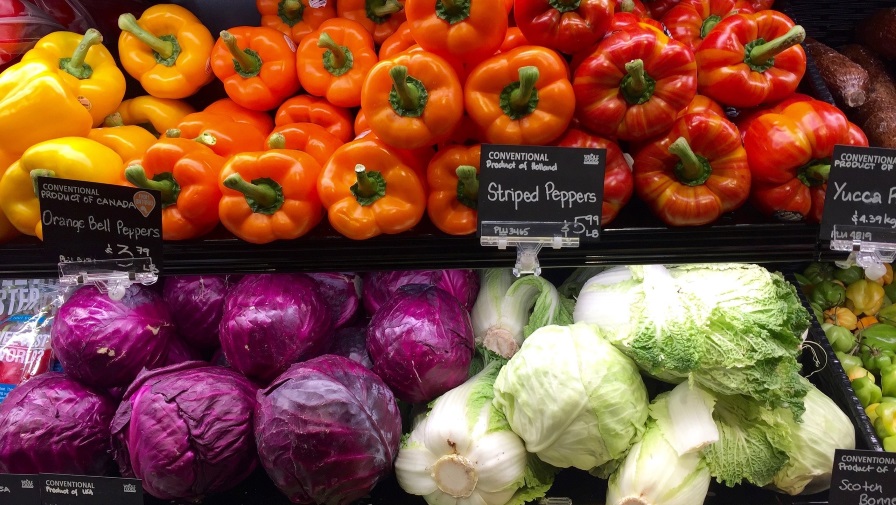Florida’s 42,500 commercial farms supply more than 280 essential commodities to households throughout North America and to 100 international trading partners. Florida’s farms are some of the most productive in the world and the value they provide to our state is second only to tourism. According to a recent study published by the University of Florida, the state of Florida’s agriculture industry creates more than 756,993 jobs and has an overall economic impact of $97 billion annually.
Florida is the No. 2 producer of fruits and vegetables in the nation. Cash receipts for agriculture production in Florida for 2005 were $7.759 Billion. According to USDA data, more than 45% of this amount was derived from specialty crop production of fresh fruits and vegetables.
The FDA reports that more than 12% of foodborne illnesses associated with outbreaks are caused by produce consumption. This higher risk level is associated with four types of fruits and vegetables commercially produced in Florida; specifically tomatoes, leafy greens, melons, and berries.
In the past four decades, foodborne disease outbreaks related to fresh produce have increased significantly partly due to increased consumption of fruits and vegetables. To help meet year-round demand, there have been changes in produce distribution and handling that might increase the risk for contamination. Salmonella is one of the leading causes of bacterial foodborne illness in humans and has been implicated in numerous outbreaks linked to tomatoes.
http://player.ooyala.com/player.js?height=236&width=420&deepLinkEmbedCode=dxMGQxMjpHPqeiNbYnQCbcHARnepeFUI&embedCode=dxMGQxMjpHPqeiNbYnQCbcHARnepeFUI
Effective food safety standards, practices, and education are critical to sustain and safeguard Florida’s high level of specialty crop production. It is essential to establish, utilize, and maintain food safety guidelines to enhance food safety at every phase of agriculture production. A high priority placed on food safety education results in the safest product possible and enhanced consumer protection.
Food Safety And Competitiveness
New Efforts Grow To Help Protect the U.S. Avocado Industry
In order for Florida specialty crops to remain competitive and to ensure safe consumption, many practices must be followed to prevent and reduce microbial or chemical contamination. These practices must be followed in every phase from farm to consumer. Specifically, this includes production, handling, packing, transporting, and serving. Tomato Good Agricultural Practices (T-GAPs) for tomato farms and greenhouses and Tomato Best Management Practices (T-BMPs) for packinghouses and postharvest handling were developed from 2004-2006; however, the basic food safety education and training to implement these requirements at all levels of tomato production from the farm to the consumer was not available or broadly offered before this program. Our recent funding from the Specialty Crop Block Grant funds, the University of Florida and the Florida Department of Agriculture and Consumer Services (FDACS) provided GAPs-specific training and materials for grower/owners and packinghouse managers.
Education And Outreach
The program was designed to enhance the safety and competitiveness of Florida specialty crops by targeting several specific educational needs. The first was to establish a working relationship between FDACS and UF/IFAS to develop and deliver food safety educational materials and training. It was decided food safety training and materials would be provided statewide by Florida Extension professionals directly to producers, fieldworkers, packers and repackers of fresh fruits and vegetables.
In addition, the development of this food safety program was to focus on those fruits and vegetables associated with the highest risk of foodborne illness and at the greatest level of production in Florida: tomatoes, leafy greens, melons, and berries. The development and implementation of this food safety program also was designed to address safe handling, production, and packing practices. This last goal is critically important for quality and competitive agriculture production and the safety of the consuming public.
To this end, the training team developed a food safety/GAPs training curriculum that was delivered at numerous locations around the state. The workshop events trained 1,027 attendees, of which 40 were University of Florida Extension agents. The majority of the non-Extension attendees were management personnel.
It was anticipated that those persons would train their upper management employees and who would in turn train the packinghouse and farmworkers. If you estimate the number of employees who will be trained by those people trained in this program, you could multiply the attendee number by 10, possible 100 (or more) to estimate the overall impact this grant has had on Florida agriculture.
One of the most impressive metrics of the success of this grant is that with approximately 1,000 persons trained, this program delivered training at a cost of only $200 to $210 per person. One of the most impressive stats from this program is that roughly 60% to 70% of the training costs were materials given directly back to the farmers and processors.
All programs were evaluated for speaker effectiveness, clarity, and significance, as well as overall workshop utility. These evaluations were reviewed after each workshop in order to assess the overall effectiveness of the program. All workshops conducted received positive ratings and the vast majority of attendees showed an increase in both knowledge and awareness, and stated they would implement GAPs at their respective farming operations.
Further, all attendees completed pre- and post-workshop exams that served as an additional quality assessment tool, as well as verification for their attendance for the entire program. Certificates of training were awarded to all documented attendees.
0
1
5
Florida Takes The Lead In Food Safety
Keith R. Schneider is an associate professor with the University of Florida's Food Science and Human Nutrition Department.
See all author stories here.








